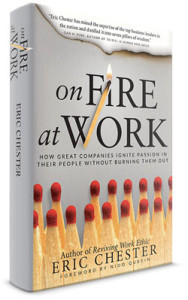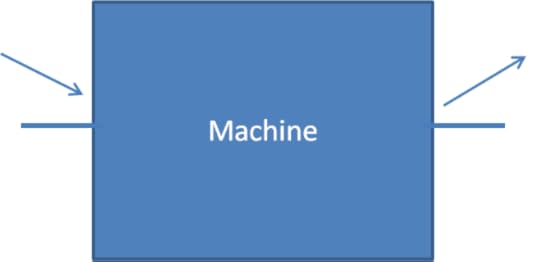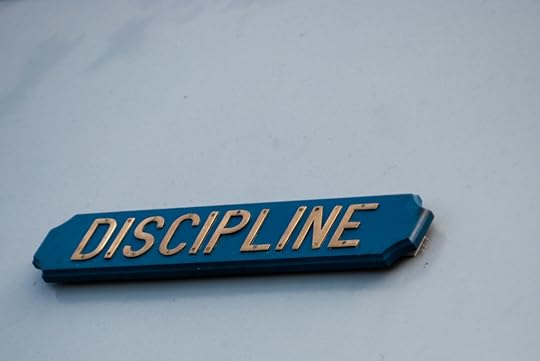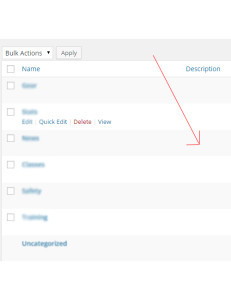Jacob S Paulsen's Blog, page 10
May 26, 2016
I Found Out My Kids Can’t Dial 9-1-1
It occurred to me all of the sudden. I was thinking about my own childhood and how I was taught when I should dial the universal emergency number.
I imagined in my own mind the house where I grew up, grabbing the phone from the wall in the kitchen and dialing three numbers; 9-1-1. That is when it occured to me. My kids don’t have it so simple. My children’s teachers, coaches, and parents (yeah me) have been teaching them the same thing we ourselves were taught… “pick up the phone and dial 9-1-1.”
The challenge is that there is no phone on my kitchen wall and dialing 9-1-1 on my cell phone takes a lot more tapping and dragging than just touching 3 numbers on a keypad.
So I decided to put it to a test…
I tried first with my 8 year old son. It went something like this:
“Simon, what should you do if one day mom falls down the stairs and hits her head and doesn’t wake up?”
Simon: “I should call 9-1-1.”
“How would you do that?”
Simon: “With a phone.”
“What phone?”
Simon: “Mom’s cell phone or your cell phone.”
“Here is my phone. Can you show me how to do it? Don’t worry, I’ll stop you before you actually dial it.”
Simon: Fiddles with the phone. Manages to unlock the screen and find the phone app. Can’t figure out how to make a dial pad display. Gives up and says: “Dad where are the numbers?”
The experiment didn’t go much better with my 5 year old daughter. I suspect they could have both successfully opened Netflix but dialing 9-1-1 was too difficult without me showing them the step by step process. Further, each time I get a new cell phone I’ll have to re-teach it for awhile.
Can your kids dial 9-1-1?
Original article: I Found Out My Kids Can’t Dial 9-1-1.






May 19, 2016
The Online Content Creation Formula For Success
 Today I had a quick conversation with a member of our team that is going to start contributing content to our website. I was explaining our general internal process for producing awesome content on our sites and it occurred to me I’ve never published an article on my own site about how to write awesome articles.
Today I had a quick conversation with a member of our team that is going to start contributing content to our website. I was explaining our general internal process for producing awesome content on our sites and it occurred to me I’ve never published an article on my own site about how to write awesome articles.
First the Disclaimer: The site you are on right now… jacobspaulsen.com is where I rant and share about my life of marketing and personal development. Don’t hold me accountable to doing all the stuff I preach on this site. The lessons I share here are things I apply on my businesses and the websites where I actually generate revenue… not here on my hobby/journal site.
Here is our process start to finish:
Identify a topic worth producing content around
Use Google and the Google Adwords Keyword tool to determine the top search phrases for that content topic. For example if I want to write an article about how to select the best toilet paper at the grocery store I might find out that the top related search phrase is actually: “Best Rated Toilet Paper.” The top search phrase should be a massive consideration in your articles headline.
Finalize the article’s headline considering both the top search phrase as well as what would actually be enticing to readers. It needs to have shock value or create significant curiosity to the relevant audience.
Find the following three competitors:
The #1 ranked content piece for your target search phrase
The #1 top quality (based on your own opinion) article on the topic
The #1 top quality or most popular YouTube video on the topic
Ask yourself how are you going to improve on the three competitors outlined above. What can you add or better explain to make it better?
Formulate an outline for your own content by first just listing out key points that you want to make. This generally just looks like a list of bullet points at first.
Organize your list of key points into the best chronological order so as to help the reader flow through the content is such a way that is logical, emotional, or brings them to the conclusion you are trying to recommend.
Ask one other person who is also very familiar with the topic to look at your outline and point out anything you have missed.
Turn the key points into section headers and repeat step 3 for each section header to make sure those section titles keep the reader reading.
Fill in the content for each section
Review the content and work on gathering or creating the best supporting images or videos to accompany the content. You probably need more than you think.
Have another person read through your final draft.
There is our full process that we try (try is a keyword here) to follow. When we do, it always leads to a source of strong and ongoing traffic.
Cheers,
Jacob
Original article: The Online Content Creation Formula For Success.






February 10, 2016
What You Need to Know About Affiliate Disclosures and Product Endorsements
 The FTC regulates the laws and rules surrounding how one has to disclose your relationship with a business, product, or organization. Advertisers have had to deal with this for decades when they pay celebrities to endorse their product in TV or radio commercials or magazine ads. The internet has changed the game because today anyone can create a blog for free and write about products and organizations. It no longer takes big money and time to become a media outlet. Everyone is a publisher.
The FTC regulates the laws and rules surrounding how one has to disclose your relationship with a business, product, or organization. Advertisers have had to deal with this for decades when they pay celebrities to endorse their product in TV or radio commercials or magazine ads. The internet has changed the game because today anyone can create a blog for free and write about products and organizations. It no longer takes big money and time to become a media outlet. Everyone is a publisher.
Because of this sudden surge in this new form of media the FTC has had to craft rules specifically about how bloggers and other internet publishers have to disclose any relationship with an advertiser or company. A relationship can be defined as about anything. If a company gives or lends you a product to review that is a relationship that must be disclosed. If you stand to gain anything like a commission by reviewing or promoting a company or their product that is also a relationship that must be disclosed.
Optionally you can include a notice next to any product endorsement with your disclaimer. Most bloggers find that the easiest way to disclaim your relationship with an advertiser is to create a separate page on the site called “Affiliate Disclosure.” Disclaim on that page that any links to external pages could be affiliate links and make sure the Affiliate Disclosure is visible on the site without having to scroll down below any given product endorsement.
->Read more about the FTC Endorsement Guidelines
->Read the specific section about online affiliate endorsements
Original article: What You Need to Know About Affiliate Disclosures and Product Endorsements.






January 28, 2016
Entrepreneurs You Are Machine Builders
Previously I wrote about the most common misconceptions and lies of entrepreneurs. Here we will talk about the correct vision of the modern entrepreneur. The way I have learned and understand it best is using the metaphor of building machines.
I view a business as a machine, simple or complex, that generates a profit. It may sound overly simple at first but at the core that is the idea. In my head I see the machine as a box that has an input on one side and an output on the other side. Into the input the entrepreneur inserts resources which may include some or all of the following: time, money, energy, capital, etc. On the other side of the machine money comes out. The work of the entrepreneur is to make sure that more money comes out of the output than went into the input. This often requires taking the machine apart and changing the mechanics to make the machine more efficient. See image below.
The good thing about building a business is that you can start just by building the simplest form of your machine (often called the minimal viable product or MVP). Put differently you want to start by inserting one dollar of resources into the machine and tweak the machine until two dollars come out the other side. Once you have these core “nuts and bolts” configured you can start to input one hundred dollars into one side and expect two hundred dollars to come out the other side.
An example of a simple machine
An entrepreneur may write an extensive guide on how to do something… say, “How to install surround sound speakers into your walls and ceiling without hiring a contractor.” The entrepreneur spends $50 on some advertisements on Google to appear when people search for “How to install speakers in walls.” The entrepreneur charges $25 for the downloadable book on their website and makes four sales from the $50 in advertising. $50 went into the machine and $100 came out the other side. There was some other initial capital that went into the guide and the website but those costs will be minimal inputs over time as the machine outputs revenue.
An example of a complex machine
Proctor and Gamble employ a R&D team to experiment with various chemicals to come up with new product ideas. One of the engineers figures out how to engineer a chemical to effectively get rid of odors. The company spends a few hundred thousand dollars working on the formula and product branding. Then another few hundred thousand to do focus groups and product testing. Eventually P&G does a test launch of the product in select Walmart stores. After a few months of figuring out what packaging makes it move off the shelves P&G invests a few million dollars in that local market for TV advertising about the product. They spend a few hundred thousand to create a few different versions of the ad to find out which version works best to educate consumers. Eventually the right formula of packaging and marketing is discovered and the product is launched nationally. We haven’t even talked about the complexity of manufacturing and distribution. At this point several million dollars are put into the machine and it begins to turn out millions.
Complex machines tend to carry much greater risk and liability because so much more money may have to go into the machine to test if it works. This is why today’s entrepreneurs are more focused than ever on developing a minimal viable product in order to test the machine at a low scale. Once the machine functions the entrepreneur can scale it into a big business by inputting more resources.
Once the entrepreneur discovers the tricks of machine building its much easier to replicate the process with new product ideas.
So the question is, what machine are you building?
Original article: Entrepreneurs You Are Machine Builders.






January 15, 2016
The Killing Paradigms or Lies of Entrepreneurship
Thinking back on my various failed ventures I can always identify one of the two paradigms below as being the driving factor in my failure. When I talk to would be or starting out entrepreneurs I now more easily recognize when they are equally stuck in one of these paradigms. The biggest issue is that all Entrepreneurs know these two paradigms (or lies) exist but somehow when we are caught up in the excitement of building a business we think we are exceptions to the lie.
Lie #1: If I Build It They Will Come
This is the product lie. Business owners are so in love with and emotionally attached to the product or service that is being built that we can’t see past the most prevalent killer paradigm of all. We somehow believe that when we bring this thing to market everyone will show up to buy it and then they will tell all their friends who will be there the next day to buy it and within a few years we will be the next Starbucks. This so rarely happens and yet we attach ourselves to it. If I invent the new mouse trap, if I create a better Facebook, if I launch this new blog, if I provide this service far better than anyone else out there… then I will make millions.
This is a lie because it takes a lot of work to get humans to change their behavior. It requires awareness and desire. Creating both is expensive. So most entrepreneurs who live in this paradigm either give up or go broke when they realize how much money it is going to cost to actually acquire a customer or two.
To give one of my own examples I remember when I launched my first blog. The blog was ground breaking and addressed a topic that was growing and under served. I was convinced that visitors would stumble upon it in droves and the ad revenue would pay off my mortgage. They didn’t and it didn’t.
Lie #2: Right now I make a little money with this. Somehow I will one day make a lot of money with this
This is the scalability lie. This usually happens to entrepreneurs who have found a simple way to make a little money. Perhaps you figured out you can buy product x at wholesale and sell it on eBay at retail or you can provide a service to friends of doing X thing that you are really good at, or you are really good at making Xs and they sell fairly well on craigslist. Any of these things could be something that could in theory build a big business but not if you continue to do it the way you are doing it.
In order to create a big business and make good money you either have to work 100s of hours a week making or selling product x, OR you have to figure out how to get leverage and remove yourself from the business. Real entrepreneurs do what they do in order to achieve some level of freedom however they define that. Working endless hours is rarely a part of that definition of freedom.
The first example that comes to my mind was a promotional apparel business I started back in 2006 with a partner. We essentially resold apparel services from a local print shop. Profit margins were good enough to justify doing it at the time but not big enough to add middlemen (salesman) to what was already a middle man operation. The two of us only had so many hours in the day so eventually we folded it up frustrated that it never could grow beyond where it started.
This picture is appropriate for this blog post because its a screenshot of a video I made for the blog I mentioned above and in the video I’m wearing a tshirt with the logo of our old promotional apparel business at that time 
Original article: The Killing Paradigms or Lies of Entrepreneurship.






January 5, 2016
All Humans Are Perfectly Disciplined
I recently listened to a podcast with Dan Sullivan. Dan is one the industries most successful and well known Entrepreneur coaches. In the podcast he taught me a different way of thinking about Discipline and I wanted to share it today.
Most of us think of Discipline as something we have or don’t have or need to work harder at having or doing. You might say, I wish I was more disciplined so I would exercise more.
Dan’s take on this is that all humans have perfect discipline to our habits. Put differently, the problem isn’t that a person lacks discipline but that the person has the wrong habits or is at very least lacking in the habit they wish to have.
I like this approach because it changes the approach to the solution. If there is something I wish was different about my life my best approach isn’t just to “try harder” to be more disciplined. My best approach is to develop that as a habit because ultimately I will be disciplined to whatever habits I have.
Thanks for that golden nugget Dan!
Original article: All Humans Are Perfectly Disciplined.






December 2, 2015
How I Built My Business While Keeping My Day Job
When I quit my day job to start working on my own business full time people expressed a lot of concern. I suppose that most of them assumed that I was going to venture out and start something new… building from the ground up. That wasn’t the case. On the day I quit my day job I was making more than double the money in my side business… and my employer had no idea.
If you are an employee of a company and also have a side business you are working on I can relate. Today I’m going to outline some of the key tools I used to manage my time in a way that I was able to grow the side business while still being true to my employer and the time I was morally and legally obligated to give them.
You Need Technology
I leveraged a lot of modern tools to allow me to keep my day job while growing my business. Some of these tools including file storage and sharing tools like Dropbox and Google Drive. Tools that made it easy to jot down quick notes or thoughts from anywhere I was like Evernote and Google Tasks. Identify the challenges in your work and business systems and find technology to solve the challenge for you.
You Need to Out Source
You don’t have to do everything in your business. Identify the tasks that can be out-sourced. Stretch yourself here… it can be very difficult to let go of things that you somehow believe that only you can do but it would be necessary eventually any way if you ever hope to have a big business and it is certainly important now if you want to keep your day job. As an example, I hired someone to take all my business phone calls. That was anywhere from 30 to 100 phone calls a week that I decided I didn’t need to answer anymore. Now that I quit my job do you think I want to answer those calls? NOPE. Happy to keep the arrangement working. I also started to hire people via Elance.com to do a lot of data entry and online research work for me. Things that really anyone with the time and limited expertise could do but that frankly I didn’t have the time for. (more on outsourcing here)
You Need to Work More Hours
Inevitably during your 8 hour employed work day some things are going to come up from your side business that you are going to have to deal with. An email here and there… an emergency on occasion. The fair way to make this all work is to build in extra hours for your employer outside of the standard 8. I got to my day job 30 minutes early every day for 5 years. I also made it a point to look at and respond to emails during the evening. If my employer ever had any concern about potential time that I took now and again they would have been reassured by the above and beyond work hours I was putting in. That is what it takes.
You Need to Batch Tasks
There are a lot of things both in your day job and almost certainly in your business that take up a lot of time. Can you batch these together to save time? Over the years I was able to find routine tasks that I used to do as they came in or daily etc… and change my system to doing them all at one time each week or month. Forcing myself to batch tasks saved a lot of time. For one example, I used to do daily accounting… entering in expenses and sales every day. Then one day I realized… I could do this monthly. Sure it may take 4 hours once a month but that would be better than 20 minutes almost every day all month long.
You Need to Focus on the One Thing
Above all else you need to learn to prioritize. To eliminate the minutia and focus on doing the most important things each day. I had a piece of paper taped to my office wall that read “What is the one thing that by doing now will make everything else easier or unnecessary?” I looked at that everyday. My employer and my business prospered because I was focused on getting the most important things done first. (The ONE Thing Book Review)
Original article: How I Built My Business While Keeping My Day Job.






October 30, 2015
Examples of How A School Teacher Retired Wealthy
My parents are cheap thrifty. Have you ever read the book, The Millionaire Next Door by Thomas J. Stanley? This book makes me think of my Dad. My parents raised five children on the income of a school teacher. Today they are retired and sitting on a good sized nest egg… though my Dad isn’t the kind of person to talk about his various investments and net worth and I’m not the guy to ask for details. Last night my Dad called to inform me they are buying the house next to their own as an investment. It has me thinking about how a school teacher become wealthy…
My parents understood that wealth accumulation isn’t so much a factor of how much money you make but how much money you save. Living “within” your means was thought to be extravagant and seeing how much money could be socked away was more of an inner competition than a simple goal.
Now that I’ve given my parents some props I can get in the reminiscing part of this article by sharing a few examples of the cheapness ability to save money we experienced.
Cereal Timelines: At some point in my childhood it was determined that we, the children, were eating too much cereal each morning. At that point forward when a new cereal box was opened my Dad would write an “expected use date” on the box. If that cereal was consumed fully before the hand written date we went hungry. When the date arrived a new box could be opened.
Lunch Money: In younger years I packed a lunch or came home for lunch. I wasn’t familiar with the concept of an allowance. When I got to Junior high it was no longer practical for me to return home for lunch so my Dad devised a new system. If I did my chores and was generally well behaved then I was given $0.50 per day in lunch money. At the time a “hot lunch” at school was running about $1.25 (a reminder here that my Dad worked in the school district and was intimately aware of the cost of lunch). The $.50 was enough to buy the leftover cheeseburger or hotdog from the previous day’s lunch and thus it was deemed sufficient. This “lunch money” was paid out monthly by check which I had to deposit/cash in my own bank account.
Paying Rent: After high school I began to pay rent to live in my parents house. Over the years I’ve met other people who have had similar requirements… but if you also had to pay rent after graduation you and I are among a select group of “special” individuals.
Reusing Dryer Sheets: My mom had an algorithm by which she determined the number of uses any single dryer sheet was good for. One unused dryer sheet was good by itself for a load of clothes. Two dryer sheets having been used once could be used together for a load of clothes. Four dryer sheets that had been used twice could be used together for a load of clothes and etc.
Ziploc’s and Tin Foil: Only in my adult life did I find out most people don’t reuse Ziploc’s and Tin Foil. After a dinner of baked potatoes we each carefully folded the tin foil that had wrapped our potato and put it in a designated drawer for reuse. Ziploc’s were put in the sink to be washed along with the dishes for the next use.
You Only Need Two Squares: My mom operated under a belief that under any circumstance a person should only need two toilet tissue squares to fully cleanse oneself in the bathroom. To use more than two squares was considered wasteful and was against the rules.
Milk From the Store: As I grew older and started to have sleepovers at friends homes I wondered why their milk tasted infinitely better than the milk at my house. The reason? Because my mom made all our milk from powdered milk which was purchased via some mail-in catalog in 50 gallon drums. Each week a few cups of powder were mixed with water and presto… we had milk.
On the Street is Free: My dad was famous for picking up stuff in the street. He came home with a lot of broken and not so broken tools, clothing, appliances, and other unidentified objects. Mostly he picked up a lot of aluminum cans because they could be cashed in at the recycling center.
The Cold Water From the Shower: Recently my dad has a revelation. With a five gallon bucket on hand, he can capture the cold water that comes out of the shower in those few moments when you are waiting for the water to heat up. This water can be used later to flush the toilet. His regret is that he didn’t figure this out years ago so his children could be forced to comply.
I was the youngest of five children and it is worth mentioning that my older siblings likely have much better examples to share! In my youth I likely complained about these and other things but now I’m grateful to have been taught frugality and money management.
Please share examples of your cheap parents in the comments below.
Original article: Examples of How A School Teacher Retired Wealthy.






October 21, 2015
On Fire At Work by Eric Chester
 Regular readers will recognize the name Eric Chester from when I reviewed his last book, “Reviving Work Ethic.” Eric has just released a new book called “On Fire At Work – How Great Companies Ignite Passion in Their People Without Burning Them Out.” As you may suspect from the title Eric’s book addresses the topic of employee engagement.
Regular readers will recognize the name Eric Chester from when I reviewed his last book, “Reviving Work Ethic.” Eric has just released a new book called “On Fire At Work – How Great Companies Ignite Passion in Their People Without Burning Them Out.” As you may suspect from the title Eric’s book addresses the topic of employee engagement.
Why You Should Read This Book
If you haven’t asked yourself how to get good employees and how to keep them then you have never worked in a leadership or management position. It is the fundamental fulcrum on which all success balances.
Eric’s approach flips around the almost silly notion that good people are just born and if you are lucky you will hire one. Instead Eric approaches engagement with the philosophy that good people are inspired and led to be good. Thus it is the leader that makes the people.
Eric uses examples and stories from interviews with over 25 founders/CEOs/presidents of companies like Marriott, Siemens, BB&T Bank, Wegmans, 7-Eleven, Hormel, Canadian WestJet, Ben & Jerry’s, and The Container Store, along with smaller companies like Firehouse Subs, the Nerdery, and Build-A-Bear.
Download the First Chapter Here
Eric has made the first chapter available to interested readers. Click here to get it.
Original article: On Fire At Work by Eric Chester.






October 7, 2015
Three WordPress SEO Tricks You Are Likely Neglecting
You have a WordPress based website and you pride yourself on knowing the SEO basics but are you forgetting to do a few simple things that could make a big difference?
1: Category descriptions. Visit the Categories sub-menu under the Posts menu. Does it look like this?
Its time to add descriptions for each category. Each category has it’s own stand alone page called the category archive. Like any other page, you ideally want to have META title, description, and keyword tags on that page. You can find that page here www.yourdomain.com/category/categoryslug. Adding the description for these categories in WordPress will translate to the Description Meta tag on the archive page. Depending on your theme the description may also display at the top of the page.
2: Page specific Meta Tags. It isn’t uncommon for me to sit down in a SEO consultation with someone who tells me they have worked long and hard to write awesome META tags for their website. I go deeper into an internal page and BAM… no meta tags at all. Are you so focused on the home page you forgot to write tags for all the internal pages and posts?
3: Bold, Underline, Italics. Another sometimes down played technique of SEO is to use Bold, Underline, and Italics to emphasize certain keywords on your website. Some SEO experts disagree on how effective this is but I’ve never heard anyone suggest it would hurt. Don’t go over board but on each page/post be sure to emphasize at least one keyword you want the search engines to notice.
Original article: Three WordPress SEO Tricks You Are Likely Neglecting.















